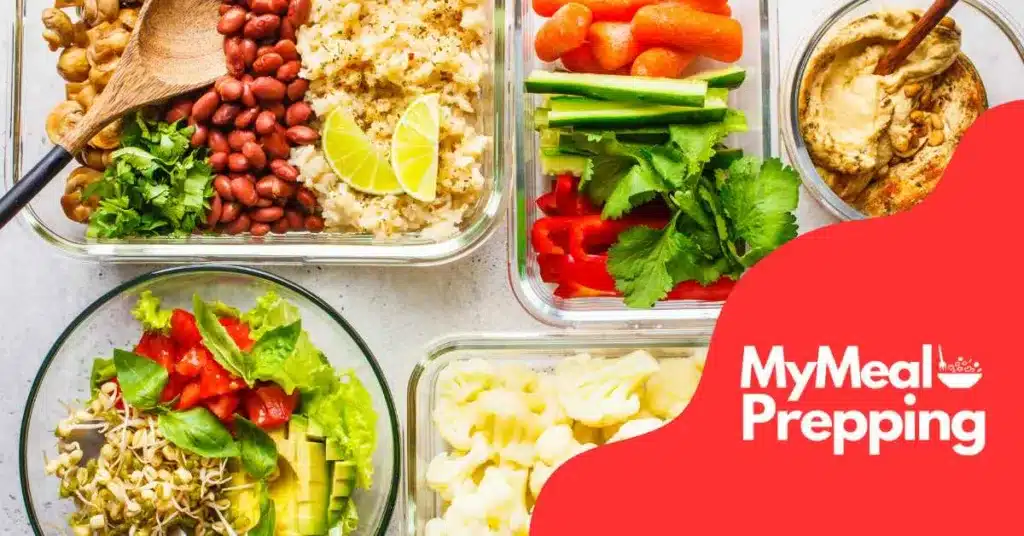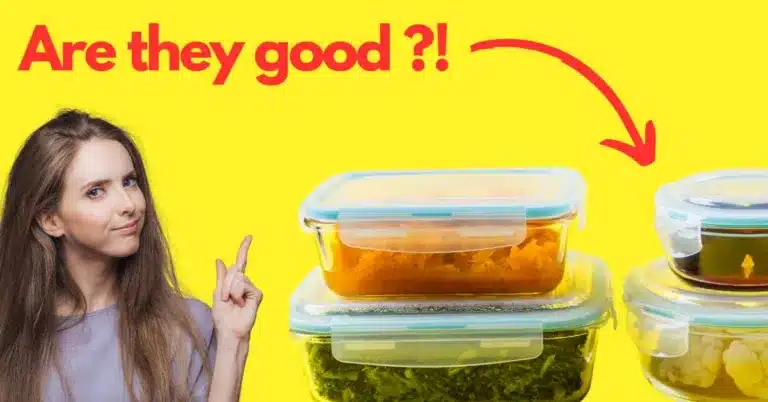Introduction
Choosing the right containers for meal prep can significantly impact your food’s freshness, taste, and nutritional value. Are glass containers good for mean prep? Renowned for their durability and safety, have become a popular choice among health-conscious consumers. Unlike plastic alternatives, glass is non-reactive and free from chemicals like BPA, which can leach into food when heated. This makes glass containers an excellent option for those who regularly prepare and store meals. In this article, we’ll explore the advantages and potential drawbacks of using glass containers for meal prep, helping you decide whether they are the right choice for your meal prepping needs.
Table of contents
Benefits of Using Glass Containers for Meal Prep
Using glass containers for meal prep offers numerous benefits that cater to health, convenience, and environmental sustainability. Here are some of the primary advantages:
1. Health and Safety: Glass is inherently free of harmful chemicals. Plastic containers can release BPA and other plasticizers into food, especially when heated. Glass, on the other hand, does not interact with the food it holds, making it a safer choice for meal prep.
2. Durability and Longevity: Glass containers are incredibly durable and can last for years if cared for properly. Unlike plastic, which can degrade over time, glass is resistant to odors, staining, and flavor retention. This resilience allows for repeated use without a decline in quality or appearance.
3. Eco-Friendliness: Glass is a sustainable choice. It is 100% recyclable, and the quality does not deteriorate with each recycle, making it a more eco-friendly option than plastic. By using glass, you reduce plastic waste and environmental impact, aligning your meal prep practices with eco-conscious values.
4. Versatility and Convenience: Glass containers are incredibly versatile. They can safely be used in the oven, microwave, dishwasher, and freezer, which plastic containers often cannot withstand. This makes meal prep easier, as you can cook, store, reheat, and even serve meals all in the same container.
5. Aesthetic Appeal: Glass containers offer a visual appeal that plastic cannot match. Their clear, clean look can motivate you to prep your meals and make your fridge or meal prep area look organized and appealing.
For more insights into the benefits of using glass containers over plastic, consider this detailed comparison by the Environmental Working Group.
Challenges of Using Glass Containers

While glass containers offer numerous benefits for meal prep, there are also several challenges that users might encounter. Here are some of the key issues to consider:
1. Weight and Portability: One of the most significant drawbacks of glass containers is their weight. Glass is considerably heavier than plastic, which can be a disadvantage for those who carry meals to work or school.
2. Risk of Breakage: Despite the durability of materials like tempered or borosilicate glass, there is always a risk of breakage.
Glass containers can shatter when dropped, which is not only inconvenient but can also pose safety risks, especially in households with young children or pets. Users need to handle glass with care, especially in busy kitchens or when cleaning.
3. Cost Comparison: Generally, glass containers are more expensive than their plastic counterparts. The initial investment may be higher, although it could pay off in the long run due to the longer lifespan of glass.
4. Storage Space: Glass containers often do not nest as compactly as plastic containers when empty. This can lead to more space being taken up in your cupboards or kitchen shelves, which might be a concern in smaller living spaces.
5. Temperature Sensitivity: Although some glass containers are designed to withstand sudden temperature changes, they can still be prone to thermal shock if misused.
Moving a container from a freezer directly to a hot oven can cause glass to crack or shatter, requiring careful handling and planning.
For further reading on how to safely handle and care for glass containers, check out this resource from Consumer Reports.
Types of Glass Used in Food Containers
Glass food containers are made from various types of glass, each offering different advantages and considerations. Understanding the distinctions between these can help you choose the best option for your meal-prep needs. Here are the primary types of glass used in food containers:
1. Tempered Glass: This type of glass is treated by heat or chemicals to increase its strength compared to normal glass. Tempered glass is much tougher and less likely to break, shatter, or chip under impact. If it does break, it crumbles into small granular chunks instead of jagged shards, making it safer for food storage. It’s also more resistant to thermal shock.
2. Borosilicate Glass: Known for its impressive resistance to thermal shock, borosilicate glass can handle temperature changes even better than tempered glass. It’s made by adding boron oxide to the traditional glassmaking silica and soda ash mix, which helps it withstand high and low temperatures without cracking. Borosilicate is ideal for those who need to transfer containers directly from the oven to the fridge or vice versa.
3. Soda Lime Glass: The most common type of glass, soda lime glass, is primarily used in windows and bottles but less frequently in food storage due to its lower resistance to thermal shock. However, it is inexpensive and widely available, making it a cost-effective option for manufacturers.
Each type of glass has its suitability depending on your specific meal prep habits. For more details on choosing the right containers for your dietary needs, consider reading about how to optimize protein in meal prep, which also involves selecting the appropriate storage solutions to maintain food quality and safety.
Best Glass Containers on the Market
Here are some of the top glass containers on the market, each offering unique features that may cater to different meal prep needs:
1. Pyrex Simply Store Glass Food Container Set: Pyrex is a renowned brand in the kitchenware sector, and their Simply Store line is particularly popular for meal prep. These containers are made from tempered glass that is oven, microwave, freezer, and dishwasher safe. The set includes various sizes, which is perfect for portion control and storing different types of meals. The lids are color-coded, making it easy to match them to their respective containers, and they seal tightly to keep food fresh.
2. Glasslock Assorted Container Set: Glasslock containers are made from oven-safe tempered glass and are known for their airtight and leak-proof lids, making them excellent for storing liquids as well as solids. The rectangular and square shapes optimize space in the fridge or freezer, making them a practical choice for batch cooking and long-term storage.
3. OXO Good Grips Smart Seal Containers: These containers feature a four-locking tab system that ensures a leak-proof seal, which is ideal for transporting meals. Made from borosilicate glass, they can withstand extreme temperature changes without the risk of shattering.
4. Anchor Hocking TrueSeal Glass Food Storage Containers: Anchor Hocking offers a robust line of glass containers with TrueSeal lids that prevent spills and keep food fresh. The containers are made from tempered glass and are designed to stack neatly, saving valuable kitchen space.
For additional insights into meal prep strategies, especially how to handle high-protein diets, you might consider exploring the article on how to achieve 130g of vegan protein daily.
How to Choose the Right Glass Containers

Choosing the right glass containers for meal prep involves considering several factors to ensure that they meet your dietary and lifestyle needs. Here’s a concise guide to help you select the most suitable glass containers:
1. Consider the Type of Glass: Assess whether you need containers made from tempered glass, which offers enhanced durability and safety, or borosilicate glass, known for its superior resistance to thermal shock. The choice depends on how you plan to use the containers—whether they need to withstand high oven temperatures or frequent changes between hot and cold.
2. Check Lid Quality: The type of lid is crucial for maintaining the freshness of your food and preventing leaks. Look for lids with airtight seals or locking mechanisms. Some lids come with silicone or rubber gaskets that provide an extra level of sealing, ideal for transporting food without spills.
3. Size and Shape: Select sizes that suit your meal portion sizes and storage space. Rectangular or square containers typically utilize space more efficiently than round ones. Having a variety of sizes can also help you manage different meal types and quantities.
4. Compatibility with Appliances: Ensure that the containers are suitable for use in your microwave, oven, freezer, and dishwasher. This versatility is key to facilitating easy meal prep, cooking, and cleanup.
5. Ease of Cleaning: Opt for containers with smooth surfaces and removable seals in the lids to avoid food and grime buildup. Containers should be easy to wash either by hand or in the dishwasher.
FAQ
Here are some frequently asked questions (FAQs) about using glass containers for meal prep, providing you with additional insights to enhance your meal-prepping experience:
Are glass containers safe to use in the microwave and oven?
Yes, most glass containers are safe to use in the microwave and oven, but it’s important to check if they are labeled as such. Containers made from borosilicate glass are particularly resistant to thermal shock, meaning they can withstand sudden temperature changes without cracking. However, always ensure the lids are removed or are microwave-safe before heating.
How do I prevent glass containers from breaking?
While glass containers are durable, they can still break if mishandled. To prevent breakage, avoid extreme temperature changes. Do not transfer a container directly from the freezer to the oven. Use protective sleeves when transporting them, and store them in a secure place where they are less likely to be dropped.
Can glass containers keep food fresh longer than plastic?
Glass containers are excellent at keeping food fresh due to their airtight seals and inert material that does not interact with food. Unlike plastic, glass does not absorb odors or colors from food, which helps in maintaining the freshness and integrity of the contents.
Are glass containers heavier than plastic ones?
Yes, glass containers are typically heavier than plastic. This might be a consideration if you transport meals frequently. However, the benefits of durability and chemical-free material often outweigh the inconvenience of extra weight.
How should I clean and maintain my glass containers?
Glass containers should be cleaned after every use to prevent staining and odor absorption. They are generally dishwasher safe, but check the manufacturer’s recommendations. For manual cleaning, use warm, soapy water and a soft sponge. Avoid abrasive scrubs that can scratch the glass.
What should I do if my glass container breaks?
If a glass container breaks, carefully collect all pieces and dispose of them safely. If the glass is shattered, consider using a piece of bread or play dough to pick up the smallest shards. Always wear protective gloves to prevent cuts while handling broken glass.
Conclusion
In conclusion, glass containers are an excellent choice for meal prep, offering a blend of durability, safety, and aesthetic appeal that is hard to match with other materials. They are free from harmful chemicals like BPA, do not retain odors or stains, and are versatile enough to go from freezer to oven to dishwasher without hassle. This makes them a favorite among those who value both health and convenience in their kitchen practices.
However, it is important to weigh these benefits against potential drawbacks such as higher cost, increased weight, and the risk of breakage. Choosing the right type of glass—be it tempered or borosilicate—along with the appropriate sizes and lid types, will ensure that your containers meet your specific meal prep needs. Additionally, opting for eco-friendly glass helps reduce environmental impact, aligning your meal prep practices with sustainable living.
Ultimately, the decision to use glass containers should be based on a careful consideration of your personal meal prep habits, budget, and storage requirements. By doing so, you can enhance not only the efficiency of your meal preparation but also contribute to a healthier lifestyle and environment. Whether storing leftovers or prepping vibrant meals for the week, glass containers offer a reliable and attractive solution for all your culinary needs.

